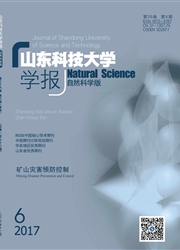

 中文摘要:
中文摘要:
在自制的固定床反应装置上对木屑和烟煤以及两者的混合物进行了热解特性研究,考察了木屑与烟煤在不同掺混比例和热解终温下的共热解反应特性.研究结果表明:协同作用发生的程度与热解反应条件有关,烟煤与木屑共热解的协同反应性不仅体现在气、液产物收率方面,同时对气体组成也有显著影响;因木屑灰分中的碱金属化合物对热解焦油的催化裂解作用,使得共热解反应在较高热解终温和较低木屑掺混比条件下表现出更为显著的协同作用;在木屑掺混比(木屑质量分数)为25%、终温540℃条件下,热解气产率的协同值达到22.6%,焦油产率协同值为-27.3%;H自由基与烟煤热解产生的自由基结合成CH4等烃类气体或转移到焦油组分,是一种重要的协同作用机理.
 英文摘要:
英文摘要:
An experimental study on co-pyrolysis of bituminous coal and sawdust is performed in a fixed bed reactor. The co-pyrolysis synergetic reactivity is investigated at different mixing ratio and pyrolysis temperature. The results indicate that the synergetic effect of co-pyrolysis is closely related to the operating parameters. The synergetic reactivity is embodied not only in gas and tar yield, but also in pyrolysis gas composition. Because of the tar catalytic cracking reaction of alkali metal compound derived from ash in sawdust, more pronounced synergetic effect is observed at higher pyrolysis temperature and lower sawdust mixing ratio. On the condition of the sawdust mixing ratio 25% and pyrolysis temperature 540 ~C, the collaborative value of pyrolysis gas is 22. 6%, while the value of tar is -27.3%. The hydrogen free radicals combine with other free radicals that produced in coal pyrolysis to generate CH4 and other hydrocarbon gases or transfer into the tar is an important synergetic reactivity mechanism.
 同期刊论文项目
同期刊论文项目
 同项目期刊论文
同项目期刊论文
 期刊信息
期刊信息
